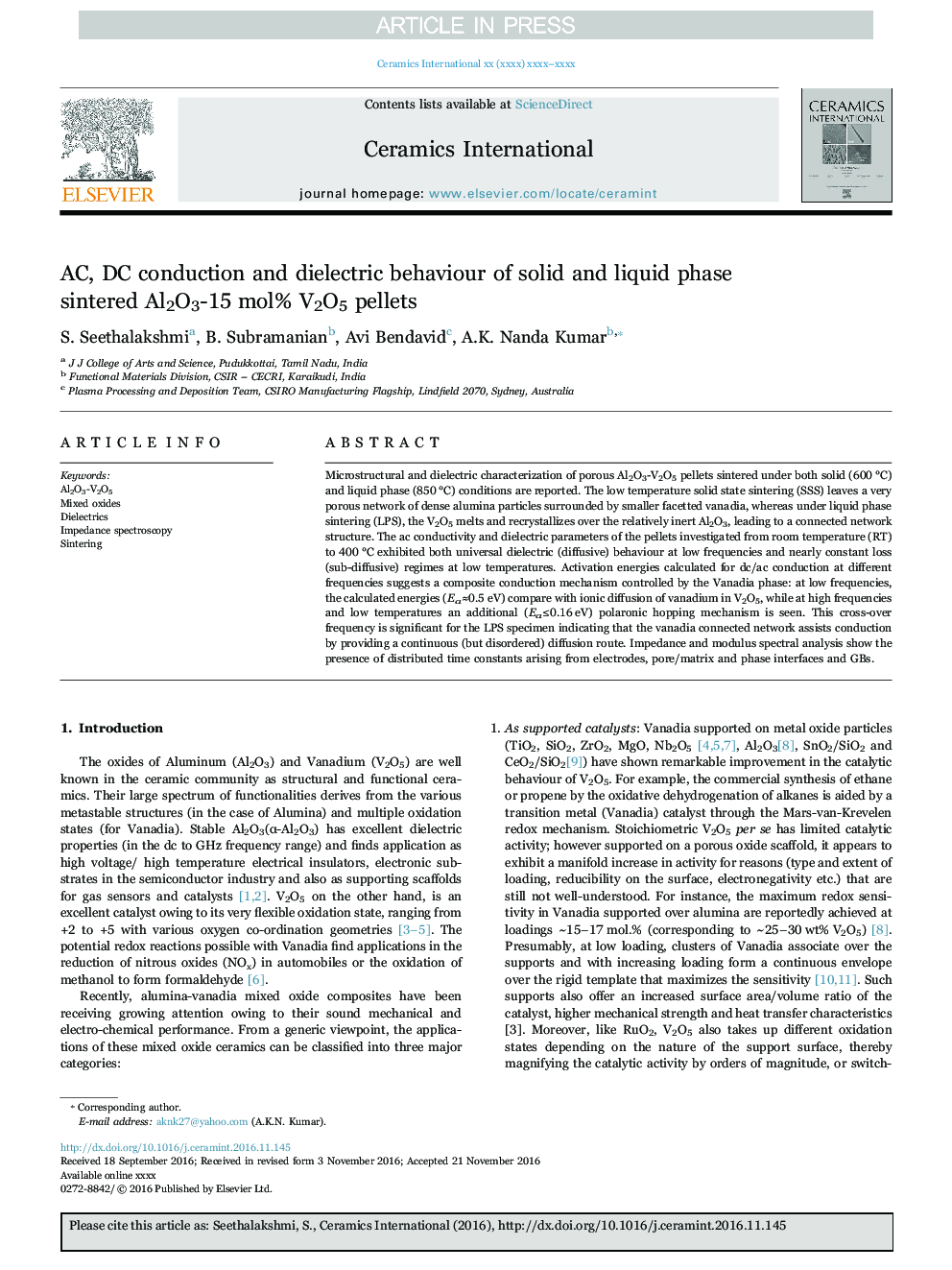| Article ID | Journal | Published Year | Pages | File Type |
|---|---|---|---|---|
| 5439002 | Ceramics International | 2017 | 10 Pages |
Abstract
Microstructural and dielectric characterization of porous Al2O3-V2O5 pellets sintered under both solid (600 °C) and liquid phase (850 °C) conditions are reported. The low temperature solid state sintering (SSS) leaves a very porous network of dense alumina particles surrounded by smaller facetted vanadia, whereas under liquid phase sintering (LPS), the V2O5 melts and recrystallizes over the relatively inert Al2O3, leading to a connected network structure. The ac conductivity and dielectric parameters of the pellets investigated from room temperature (RT) to 400 °C exhibited both universal dielectric (diffusive) behaviour at low frequencies and nearly constant loss (sub-diffusive) regimes at low temperatures. Activation energies calculated for dc/ac conduction at different frequencies suggests a composite conduction mechanism controlled by the Vanadia phase: at low frequencies, the calculated energies (Eaâ0.5 eV) compare with ionic diffusion of vanadium in V2O5, while at high frequencies and low temperatures an additional (Eaâ¤0.16 eV) polaronic hopping mechanism is seen. This cross-over frequency is significant for the LPS specimen indicating that the vanadia connected network assists conduction by providing a continuous (but disordered) diffusion route. Impedance and modulus spectral analysis show the presence of distributed time constants arising from electrodes, pore/matrix and phase interfaces and GBs.
Related Topics
Physical Sciences and Engineering
Materials Science
Ceramics and Composites
Authors
S. Seethalakshmi, B. Subramanian, Avi Bendavid, A.K. Nanda Kumar,
